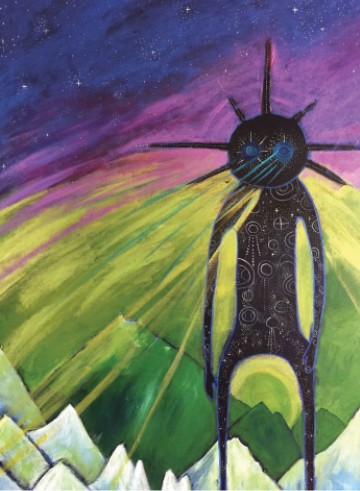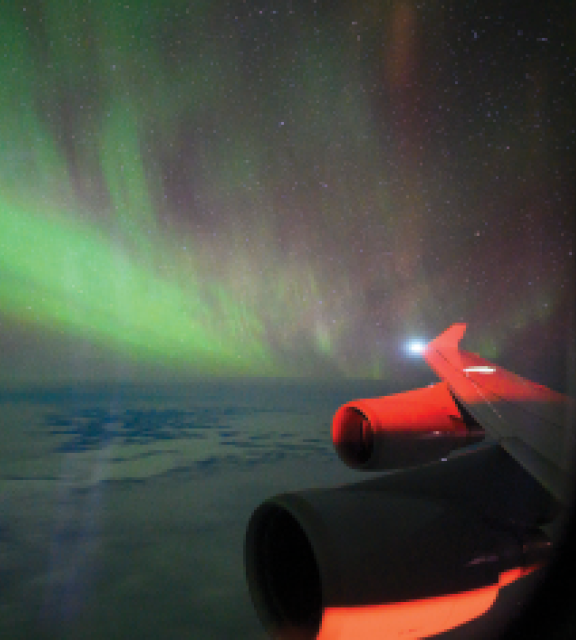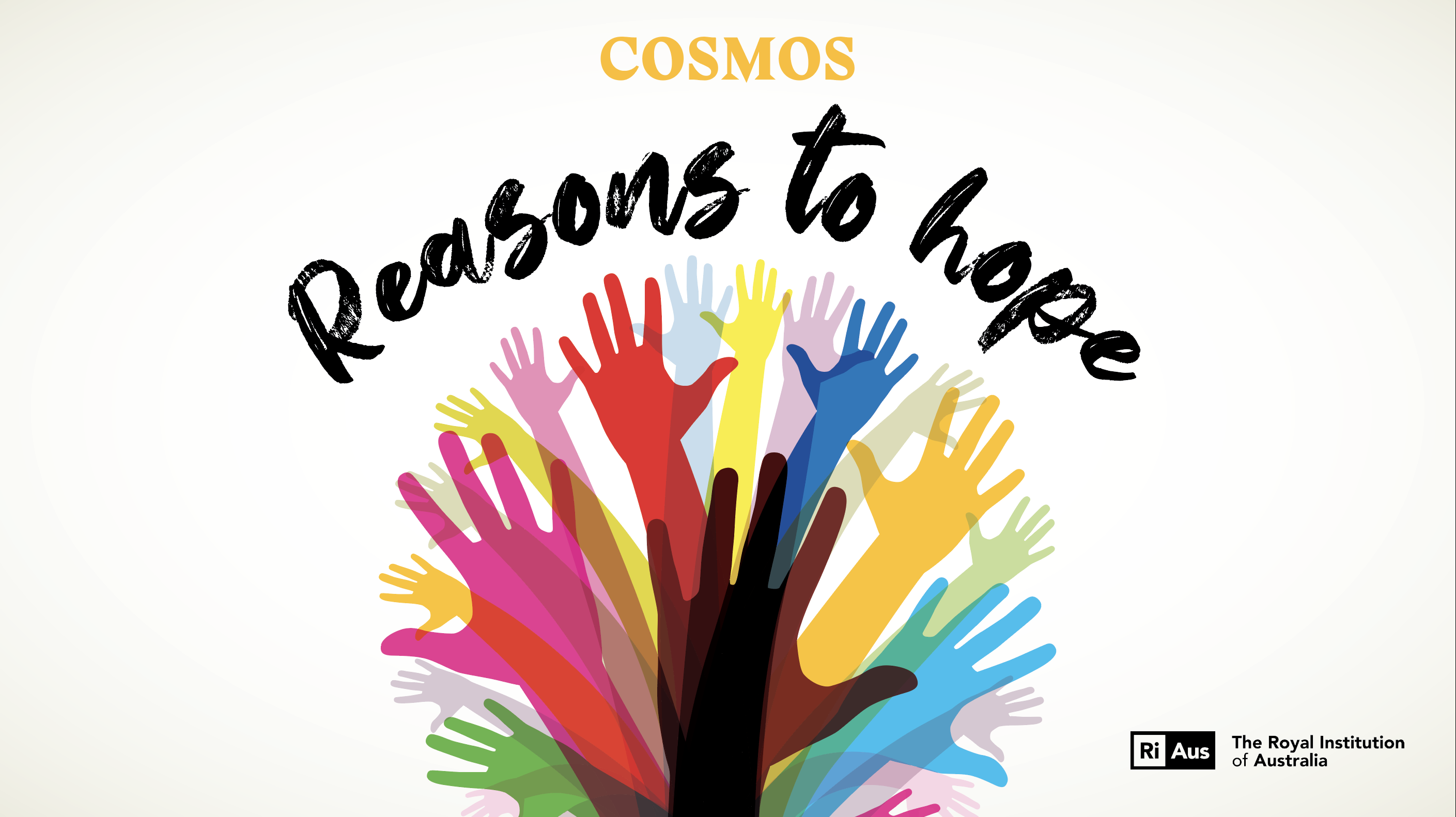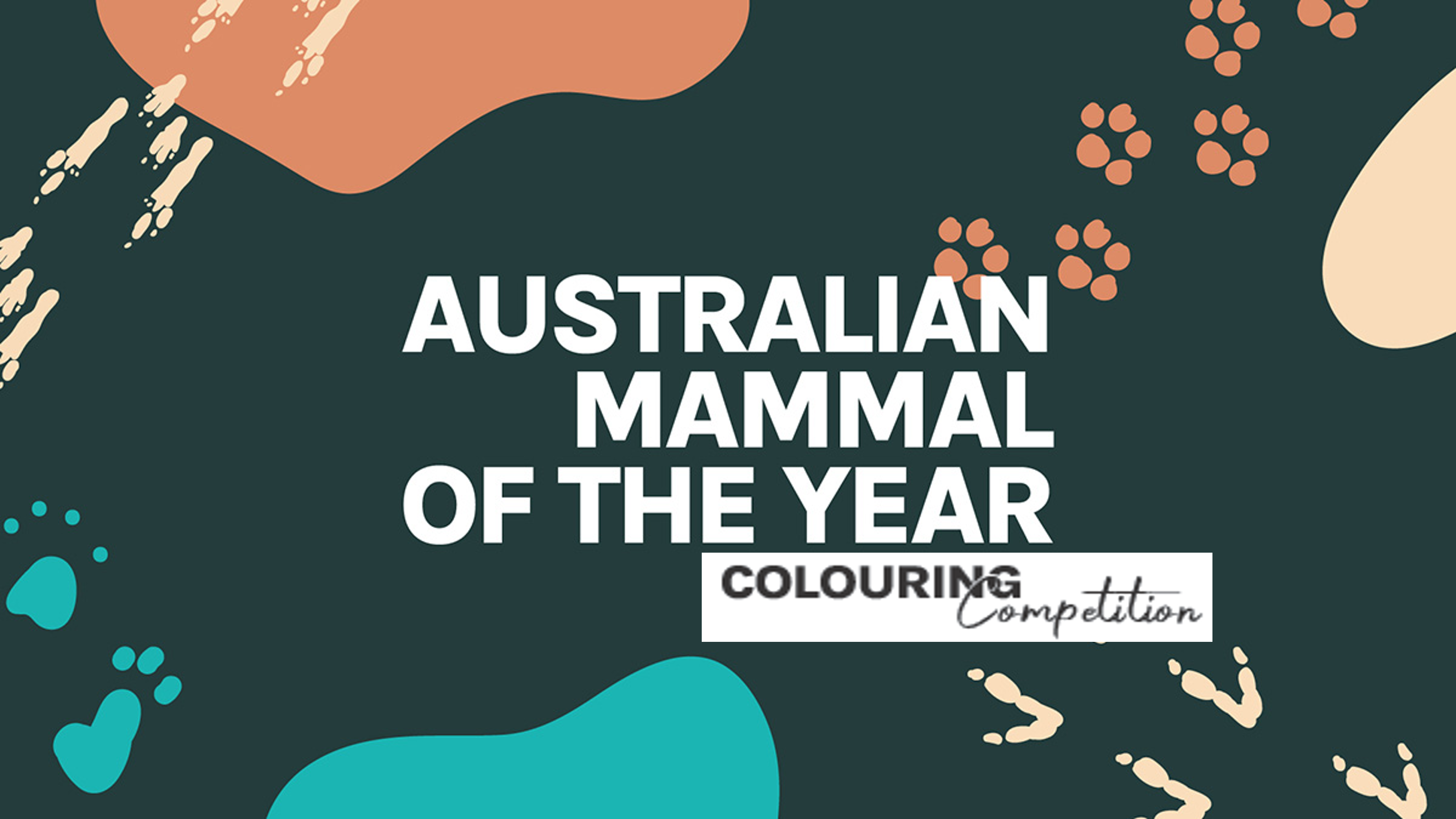The Southern Lights of the Aurora Australis are writ large in the storytelling traditions of Indigenous Australians, write Krystal De Napoli and Duane Hamacher.
This article demonstrates real-world applications of magnetism, electrical charge and waves to Physics students, the features of the Earth to Earth and Space students and elements to Chemistry students. Use this activity with Year 6-9 students to encourage them to make connections between these traditional Indigenous stories and Western scientific understanding.
Word Count: approx.1500
Have you ever looked south on a dark night and noticed a faint glow of light arching across the horizon? For those in the far south of Tasmania, you might have even seen red and green waves dancing across the sky. These are the Southern Lights, also known as the Aurora Australis. The swirling lights of the aurora are a rare sight to behold from Australia, but appear in numerous Aboriginal astronomical traditions across the southern half of the continent.
Although more commonly seen from southern areas of Victoria, Tasmania and the southern coast of Western Australia, these lights can be seen from more northerly locations, too. Aboriginal knowledge holders in south-west Queensland describe the aurora as feast fires of the Oola Pikka. These are spiritual beings that speak to elders through the aurora.
In Pitjantjatjara traditions near Uluru in the Northern Territory, the aurora is known as Tjura, referring to a glowing light visible at night. Long ago a group of hunters feasted upon a kalaya (a sacred emu), breaking a cultural taboo. Upon committing this act, the hunters saw smoke start to rise in the south, towards the lands of the Tjura. The Tjura are considered poisonous flames that were sent as punishment to these hunters for their disregard of cultural Law.
Fire in the sky
The elusive nature of the aurorae, accompanied by the red tinge to their appearance when seen from Australia, means communities typically associate these lights with fire and death. They also serve as an educational purpose, ensuring that the integrity of Law is highlighted and reinforced.
In the traditions of the Dieri people of South Australia, aurorae are known as pilliethillcha, whose sighting evokes a great sense of anxiety and fear. This is because pilliethillcha is seen as fire; a warning from the evil Kootchie spirit that a pinya (armed party) is punishing someone who has broken traditional Law.
In Gunditjmara traditions of coastal western Victoria, the aurorae are called puae buae, meaning “ashes”. In Gunai/Kurnai traditions of Gippsland in eastern Victoria, aurorae are perceived as bushfires raging in the spirit world. This represents the physical manifestation of the anger shown by the powerful sky ancestor Mungan Ngour.
Mungan is considered a figure of great importance, setting the rules for the initiation of boys into manhood. He put his son, Tundun, in charge of these sacred ceremonies. Knowledge pertaining to the male initiation ceremonies is restricted to men, and is taboo to women.
After someone leaked initiation secrets to women, Mungan became enraged. As punishment, he cast down a great fire to destroy the Earth. This fire ignited as the aurorae, which filled the entire space between the heavens and the land. It was followed by a destructive tsunami, leaving many casualties in its wake. Following this harsh lesson, Mungan permitted the survivors to continue the practice of initiation, but with the strong warning that if the taboo is ever broken again, he will once more fill the sky with these burning lights.
Global cultural views
Indigenous cultures, particularly those located at latitudes near the South and North Poles, feature aurorae throughout their astronomical traditions. In Inuit traditions of the Hudson Strait in far north Quebec, Canada, the aurorae represent the torches of spirits who lead the souls of the recently deceased to paradise.
In Aotearoa/New Zealand, the Māori of Whanganui call the Southern Lights Tahunui-a-rangi, which translates to “great glowing sky”. Long ago, ancestors left islands in the central Pacific and reached Aotearoa, arriving on a series of waka (canoes). One of these waka continued sailing southward, eventually settling on lands unknown far over the southern horizon. Aurorae are believed to be reflections of the light and smoke of these ancestors’ fires, signalling their enduring presence.
Māori traditions also describe the aurorae as Maru, which is the name of a Māori war-deity. The sighting of an aurora on the path to war would serve as a warning for those to not proceed, as continuing onward would be sure to lead to one’s own undoing.
The 11-year solar cycle
Auroral cycles are closely linked to the appearance of sunspots. In Zambezi traditions of Mozambique, the Moon-woman was jealous of the Sun-man. One day she tried to steal from the Sun-man, who threw mud at her as punishment. These can be seen as the dark maria of the Moon. The Moon-woman, vengeful, waits patiently until the Sun-man is not paying attention.
She then throws mud at his face, causing spots. But it does not last for long and the Sun-man does not fight back, as it only happens every 10 years or so. Aurorae are very rare from this part of Africa, but this cycle is also described by the Dharawal Aboriginal people of southern Sydney.
In Dharawal traditions, the appearance of the tangara (aurora) indicates the start of the 11-year Mudong weather cycle. Aunty Frances Bodkin teaches that the tangara tend to appear during the annual Ngoonungi season, which is a period of warmth that occurs from September through October. This is notably at the time of auroral activity, which tends to peak around the equinoxes. Aunty Fran said the Mudong cycle kicked off in 2001, coinciding with a maximum in the solar cycle.
The colour of darkness
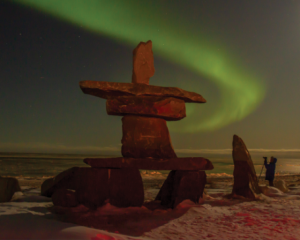
In terms of Western science, aurorae are created by highly energetic charged particles from the Sun, which spread out across the Solar System as solar wind. These particles reach the Earth at speeds of around 2,000km per second and are then funnelled and accelerated by the Earth’s magnetic field into large rings that encircle the poles. These ionised particles strike the molecules in our upper atmosphere, releasing energy as light, which we see as the aurora.
The colour of aurorae depends on the type of molecules interacting with the charged particles. Oxygen interactions typically create green-hued aurorae, while nitrogen interactions result in a redder hue. Since nitrogen comprises a majority of the air we breathe, people looking from farther away will tend to see aurorae that are high in the atmosphere, meaning they often appear red in colour.
These collisions are concentrated in rings approximately 20 degrees from the Poles. In the Northern Hemisphere, these rings cross over northern Europe, Russia and North America. People there can see a wide variety of aurorae, including green curtains and multi-coloured dancing lights.
In the Southern Hemisphere, the auroral rings lie around 70° south of the equator, over a region under which there is no habitable land. This means that the auroral displays visible from Australia tend to be high-altitude aurorae, which are dominated by interactions that create a red glow in the southern skies.
The sound of light
A strange phenomenon that many observers of aurorae report is that they make sound. It is described as crackling and hissing, like static, or a piece of meat hitting a frying pan.
Sámi of far northern Europe refer to aurorae as guovssahas, meaning “the light you can hear”. In the 19th century, Tasmania’s First Peoples said that a bright aurora near Hobart made sounds like “people snapping their fingers”. According to Aboriginal historian Aunty Patsy Cameron, the clans who belonged to the Ben Lomond region called the Southern Lights Nohoiner.
In Alaska, Inuit traditions link the sounds of an aurora with sky ancestors playing a sport that involved kicking a walrus skull so the tusks stick into the ground. It is also believed to represent ancestors trying to speak to the living.
After hearing accounts of aurorae making sounds, a group of physicists from Finland tried to better understand how this works. Many scientists had dismissed the phenomenon, but their work shows that when the conditions are right in the atmosphere, electric charges in the air build up and discharge when struck by the charged particles of solar wind. This gives off an audible sound.
Light by night, light’s by flight
Views of the aurora are being erased and continually threatened by encroaching light pollution. As our views of the stars are washed out, so are the traditions linking to them. Innovations in astro-tourism have opened up new and improved ways of accessing the Southern Lights. Rather than waiting for the lights to come to you, you go to them! In April of 2021, we both joined Mark Rigby as astronomer guides on Melbourne’s first ever aurora flight.
Taking off on a Qantas Boeing 787 with 240 fellow space enthusiasts, the 11-hour trip took us south towards Antarctica. After a while, the cabin lights were dimmed. The aurorae first materialised as a faint white ribbon slithering across the sky. As our eyes adjusted, we could make out the distinctly green dancing curtains. It was the first time either of us had ever seen the aurora.
These Southern Lights have inspired observers for millennia and will continue to do so, but only if we can keep our skies dark.
This article was written by Krystal De Napoli, a Gomeroi woman and award-winning science communicator who is pursuing an Honours degree in astrophysics at Monash University, and Duane Hamacher, Associate Professor of Cultural Astronomy in the ASTRO-3D Centre of Excellence at the University of Melbourne, for Cosmos Magazine Issue 92.
Cosmos magazine is Australia’s only dedicated print science publication. Subscribe here to get your quarterly fill of the best Science of Everything, from the chemistry of fireworks to cutting-edge Australian innovation.
Years: 5
Login or Sign up for FREE to download a copy of the full teacher resource

